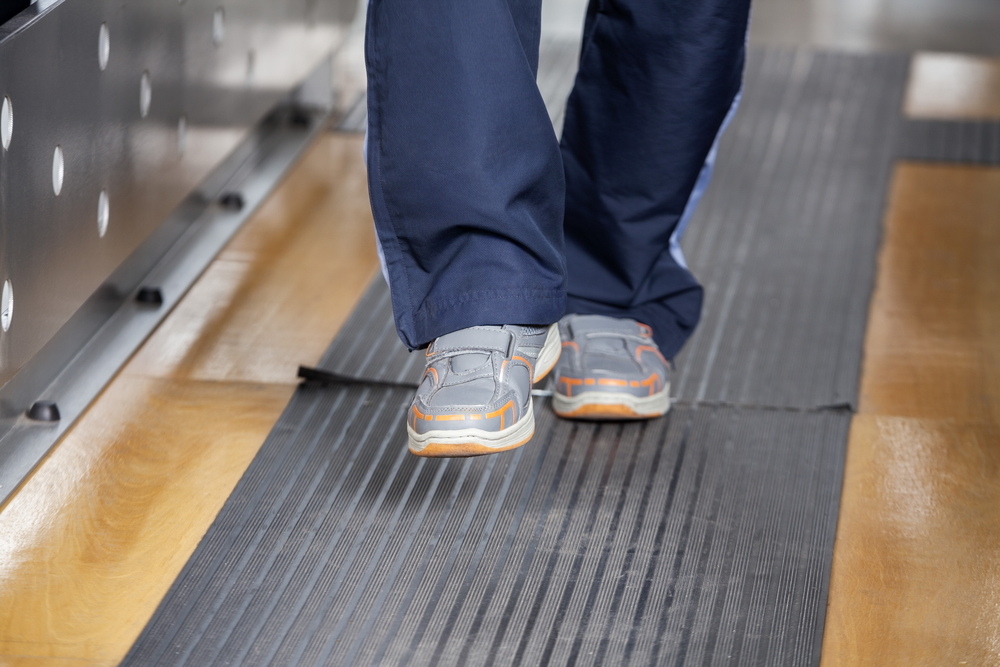Make an Appointment
Parkinson's disease is a complex neurological disorder that affects thousands of Australians, leading to challenges in movement, balance, and daily functioning. For many living with Parkinson's, the goal is not just to manage symptoms but to actively maintain a high quality of life. In this blog, we will discuss the comprehensive treatment options available for Parkinson's disease. We explore both conventional medical treatments and multidisciplinary rehabilitation approaches that empower individuals to improve mobility, manage pain, and enhance overall independence. With a "health first" philosophy, our aim is to provide practical strategies and insights to help you or your loved one embrace a more active and fulfilling life.

What is Parkinson's Disease?
Parkinson's disease (PD) is a progressive disorder of the central nervous system, primarily affecting motor function due to the gradual loss of dopamine-producing neurons in the brain. This condition manifests through symptoms such as:
- Tremors: Involuntary shaking, usually in the hands.
- Rigidity: Muscle stiffness that can limit movement.
- Bradykinesia: Slowed movement, making even simple tasks laborious.
- Postural Instability: Impaired balance, increasing the risk of falls.
Why is Effective Treatment Crucial?
Managing Parkinson's disease effectively is essential to:
- Alleviate Symptoms: Medication and therapy can reduce tremors, stiffness, and slowed movement.
- Enhance Mobility and Safety: Tailored exercise and rehabilitation programs improve balance and coordination, helping to prevent falls.
- Promote Independence: By maintaining physical function, individuals can perform daily tasks with less reliance on carers.
- Improve Emotional Wellbeing: A comprehensive treatment plan can significantly reduce anxiety, depression, and enhance overall quality of life.
Understanding these aspects of Parkinson's disease is key to appreciating the importance of a multidisciplinary treatment strategy. Research from the Better Health Channel and NDIS underscores the benefits of early intervention and continuous, integrated care for better long-term outcomes.

Conventional Medical Treatments
The cornerstone of Parkinson's disease management is medication. Key medications include:
- Levodopa: Replenishes dopamine levels to improve movement.
- Dopamine Agonists: Mimic the effects of dopamine in the brain.
- MAO-B Inhibitors: Help slow the breakdown of dopamine.
- Anticholinergics: Often used to control tremors.
These medications are individually tailored and frequently adjusted as the disease progresses. While effective in managing symptoms, medication alone does not address all aspects of the condition.
The Role of Allied Health Interventions
A multidisciplinary approach incorporating allied health services greatly enhances treatment outcomes by addressing physical, functional, and communication challenges. Consider these key interventions:
Physiotherapy
Physiotherapists work to improve mobility, balance, and overall physical function. Common physiotherapy strategies include:
- Gait Training: Exercises designed to improve walking patterns and reduce the risk of falls.
- Balance and Strength Exercises: Tailored routines that enhance muscle strength, improve coordination, and minimise rigidity.
- Manual Therapy: Hands-on treatments to relieve pain and stiffness.
Learn more about physiotherapy's impact on Parkinson's care at Physiotherapy Australia.
Occupational Therapy
Occupational therapists help patients adapt daily activities and modify their living environments to maintain independence. Their interventions focus on:
- Activities of Daily Living (ADL) Training: Strategies to enhance self-care, meal preparation, and home management.
- Environmental Modifications: Recommendations such as improved lighting, grab bars, and clear pathways to reduce fall risk.
- Adaptive Techniques: Tools and strategies to overcome physical limitations.
For additional insights, visit Occupational Therapy Australia.
Speech Pathology
Parkinson's can affect speech clarity and swallowing, and speech pathologists play a crucial role in managing these symptoms by:
- Voice Exercises: Techniques to improve volume, tone, and clarity.
- Swallowing Therapy: Strategies to manage dysphagia, ensuring safe and effective eating.
- Communication Techniques: Methods to overcome speech difficulties and enhance overall communication.
More information can be found at Speech Pathology Australia.
Exercise Physiology
Exercise Physiologists develop personalised fitness programs tailored to the specific needs of Parkinson's patients. Their focus includes:
- Aerobic Exercise: Activities like walking or cycling to improve cardiovascular health and endurance.
- Resistance Training: Strength-building exercises that counteract muscle weakness.
- Balance and Coordination Drills: Focused exercises to maintain stability and prevent falls.
Integration and Collaborative Care
The true power of treatment for Parkinson's disease is realised when these interventions are integrated:
- Unified Care Plans: When physiotherapists, occupational therapists, speech pathologists, and exercise physiologists work together, treatment becomes more effective. Improvements in mobility can be enhanced by occupational adaptations, while speech improvements support better overall communication.
- Ongoing Assessment: Regular joint assessments allow for adjustments to treatment plans, ensuring that therapies remain responsive to your evolving needs.
- Holistic Support: An integrated approach not only addresses physical symptoms but also supports emotional and cognitive wellbeing, leading to an overall better quality of life.
At Physio Inq, our comprehensive approach means that all elements of Parkinson's treatment are coordinated seamlessly. Our services, such as Physiotherapy, Occupational Therapy, Speech Pathology, and Exercise Physiology, work together to provide you with a tailored care plan that maximises recovery and promotes independence.

Implementing effective treatment for Parkinson's disease involves actionable strategies you can adopt as part of your rehabilitation plan:
- Develop a Consistent Exercise Routine
- Action: Collaborate with an Exercise Physiologist to create a customised exercise program focused on improving strength, balance, and endurance.
- How It Helps: Regular exercise reduces rigidity, improves mobility, and lowers the risk of falls.
- Tip: Incorporate low-impact activities such as walking, cycling, and water aerobics.
For personalised exercise plans, explore our Exercise Physiology services.
2. Optimize Home Safety with Occupational Therapy
- Action: Arrange for an occupational therapy assessment to adapt your home environment. This could include installing grab bars, enhancing lighting, and minimising clutter.
- How It Helps: A safer home environment reduces the risk of falls and enables greater independence.
- Tip: Regularly review your living space and update modifications as needed.
For home adaptations, contact our Occupational Therapy team.
Guidance on home modifications is available from the NDIS Accessible Home Modifications.
3. Enhance Communication and Swallowing Through Speech Therapy
- Action: If you experience speech or swallowing difficulties, work with a Speech Pathologist to develop specific therapeutic exercises that improve clarity and safety.
- How It Helps: Effective speech therapy can alleviate communication challenges and manage dysphagia, ensuring nutritional safety.
Learn more about our Speech Pathology services for targeted interventions.
For more on speech therapy strategies, visit Speech Pathology Australia.
4. Incorporate Technology for Ongoing Monitoring
- Action: Explore the use of sensor-based monitoring and digital apps that provide real-time feedback on your exercise performance.
- How It Helps: Technology can help track improvements in mobility and balance, allowing for timely adjustments to your rehabilitation plan.
- Tip: Discuss with your care team about integrating technological tools into your treatment plan.
For integrated digital care options, consider our Telehealth Services.
Learn more about technology in rehabilitation at NDIS Telehealth Services.
5. Engage in Regular Follow-Ups and Assessments
- Action: Set up periodic reviews with your multidisciplinary team to monitor progress and adjust treatment as necessary.
- How It Helps: Regular assessments ensure that your treatment remains effective and is tailored to your evolving needs.
- Tip: Keep a progress journal to document improvements, challenges, and any changes in your condition.
For continuous care, explore our Mobile Physiotherapy options.
For ongoing health assessments, review guidelines from the Australian Institute of Health and Welfare.

Benefits and Outcomes
The comprehensive treatment options discussed lead to a range of significant benefits for individuals with Parkinson's disease:
Enhanced Mobility and Independence
By engaging in tailored exercise programs and safety adaptations, patients can improve their physical function, reduce fall risk, and maintain independence in daily activities.
Improved Symptom Management
Effective interventions manage motor symptoms such as tremors, rigidity, and bradykinesia, leading to a reduction in pain and improved overall well-being.
Better Communication and Swallowing Function
Speech therapy improves voice modulation and swallowing, ensuring that patients can communicate effectively and maintain proper nutrition.
Holistic Health Improvements
A multidisciplinary approach not only enhances physical capabilities but also boosts mental and emotional health, reducing anxiety and depression associated with Parkinson's disease.
Sustainable, Integrated Care
The collaboration between allied health professionals creates a seamless treatment experience, ensuring that all aspects of rehabilitation work together to provide optimal outcomes.
- Better Health Channel – Exercise for Older People
- Physiotherapy Australia
- NDIS Accessible Home Modifications

Frequently Asked Questions
Q: What is Parkinson's disease and what are its primary symptoms?
A: Parkinson's disease is a chronic, progressive neurological disorder characterized by tremors, rigidity, slowed movement (bradykinesia), and postural instability. These symptoms can significantly impair daily functioning and quality of life.
Q: How can physiotherapy help manage Parkinson's symptoms?
A: Physiotherapy focuses on improving mobility, balance, and strength through targeted exercise programs, manual therapy, and gait training, which help reduce rigidity and the risk of falls. Learn more at Physiotherapy Australia.
Q: What role does occupational therapy play in Parkinson's care?
A: Occupational therapy adapts daily activities and your living environment to support independence, ensuring that any improvements in physical function translate into better practical daily outcomes. More information is available at NDIS Accessible Home Modifications.
Q: Are telehealth and mobile services effective for Parkinson's care?
A: Yes, telehealth and mobile services provide flexible, continuous care, especially beneficial for patients with mobility challenges. They ensure that therapy remains consistent, even when travel is difficult. For more, please see NDIS Telehealth Services.
Q: How often should therapy sessions be held for Parkinson's disease?
A: The frequency of sessions depends on individual needs and progression. Regular, ongoing sessions—often multiple times per week—are typically recommended, with periodic assessments to ensure the treatment plan remains effective.

In summary, an integrated, "health first" approach to treating Parkinson's disease can substantially improve physical function, reduce symptoms, and enhance overall quality of life. By combining conventional medications with comprehensive allied health interventions, such as physiotherapy, occupational therapy, speech pathology, and exercise physiology, you can achieve better mobility, improved communication, and greater independence.
If you or a loved one is ready to explore how a tailored, multidisciplinary treatment plan can transform Parkinson's management, contact us today to book an appointment or make a referral. To discover more about our comprehensive services, please explore:
Live a life with less limits

Date Published: Wednesday, April 16, 2025
Locate a Aged Care Exercise Physiology
Service Near me
Get the experience & convinence you deserve to support your or a loved one's allied health needs.
Our Aged Care Exercise Physiology team are currently serving & taking appointments in the following states and regions in Australia:
New South Wales
- Blacktown
- Blue Mountains
- Campbelltown And Macarthur
- Canterbury-Bankstown
- Central Coast
- Eastern Suburbs Sydney
- Georges River
- Hawkesbury
- Inner East Sydney
- Inner West Sydney
- Lower North Shore
- Newcastle
- Northern Beaches
- North Sydney
- Parramatta
- Penrith
- South West Sydney
- Sutherland Shire
- Sydney CBD
- The Hills Shire
- Upper North Shore
- Waverley
- Wollongong
Tasmania
Victoria
Need to get into direct contact with ur Client Services team? We're all ears. Call our team directly on 1300 731 733



